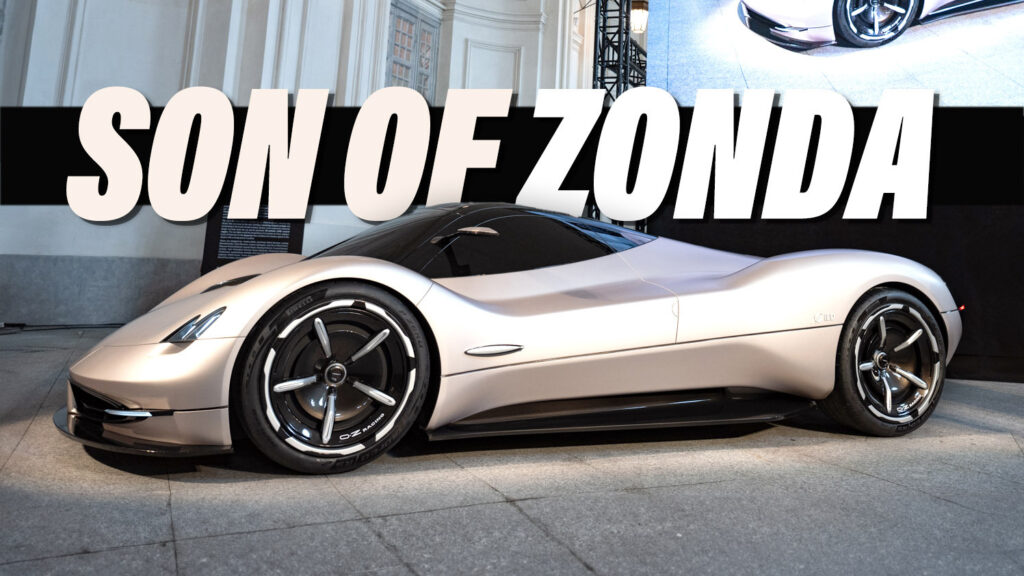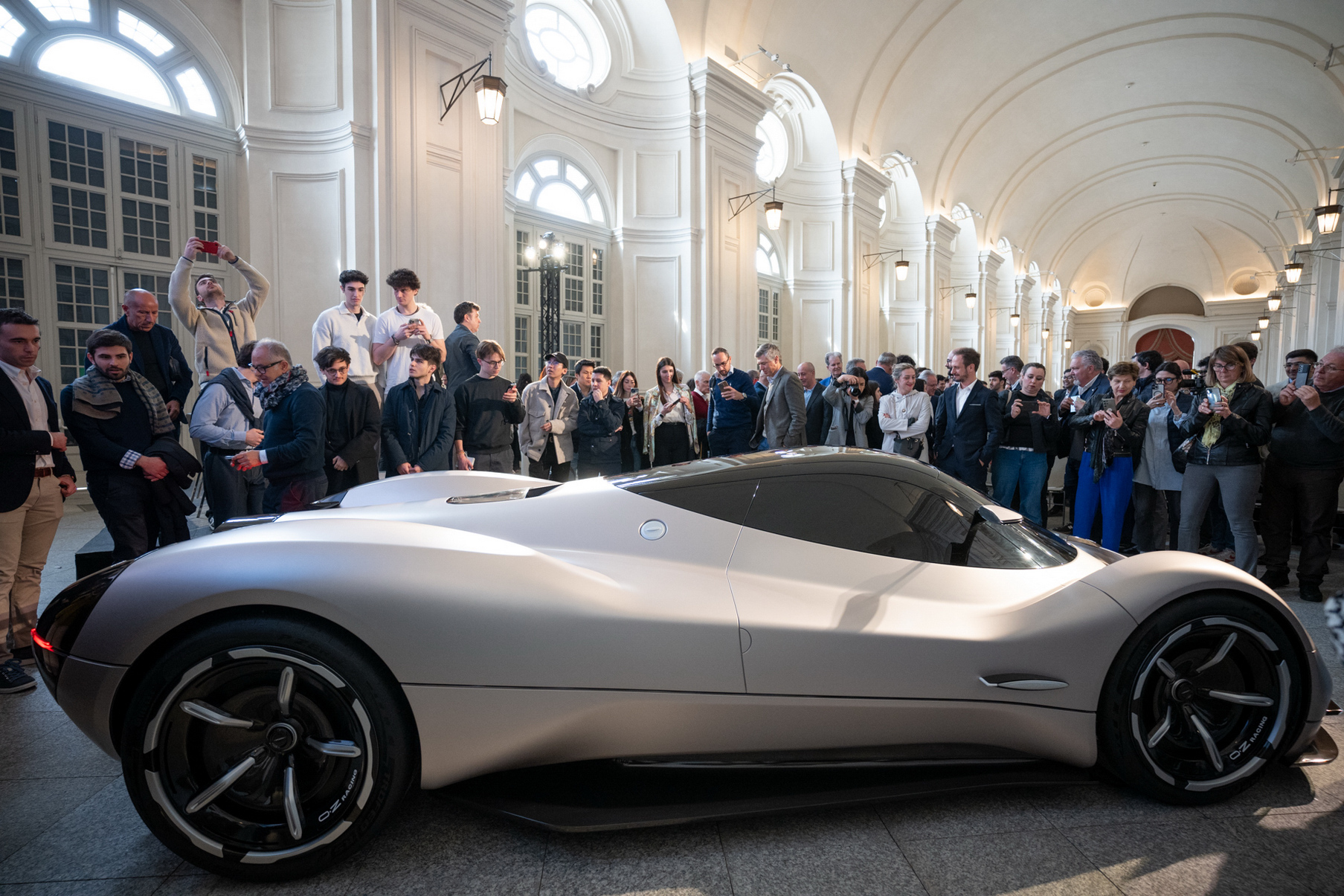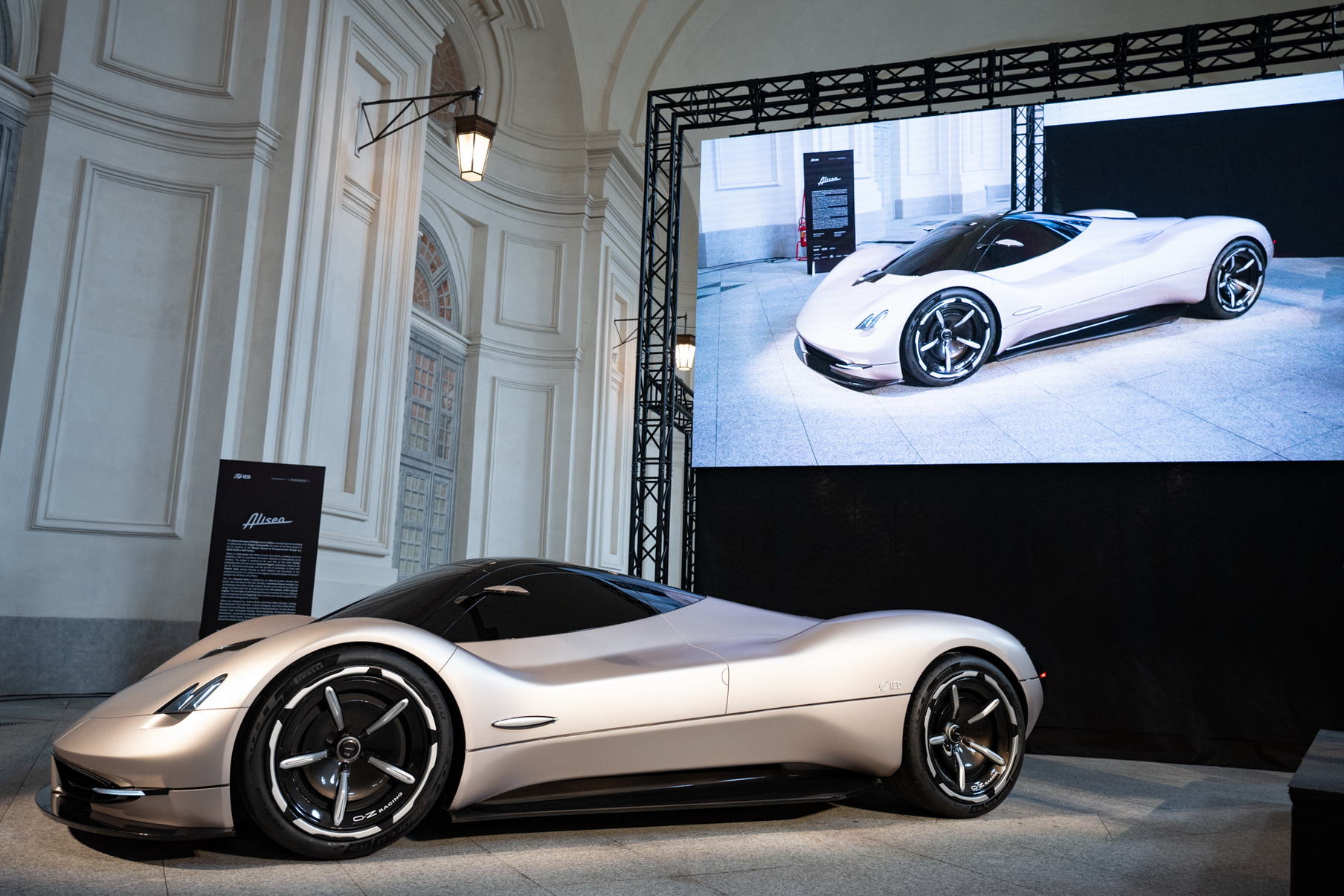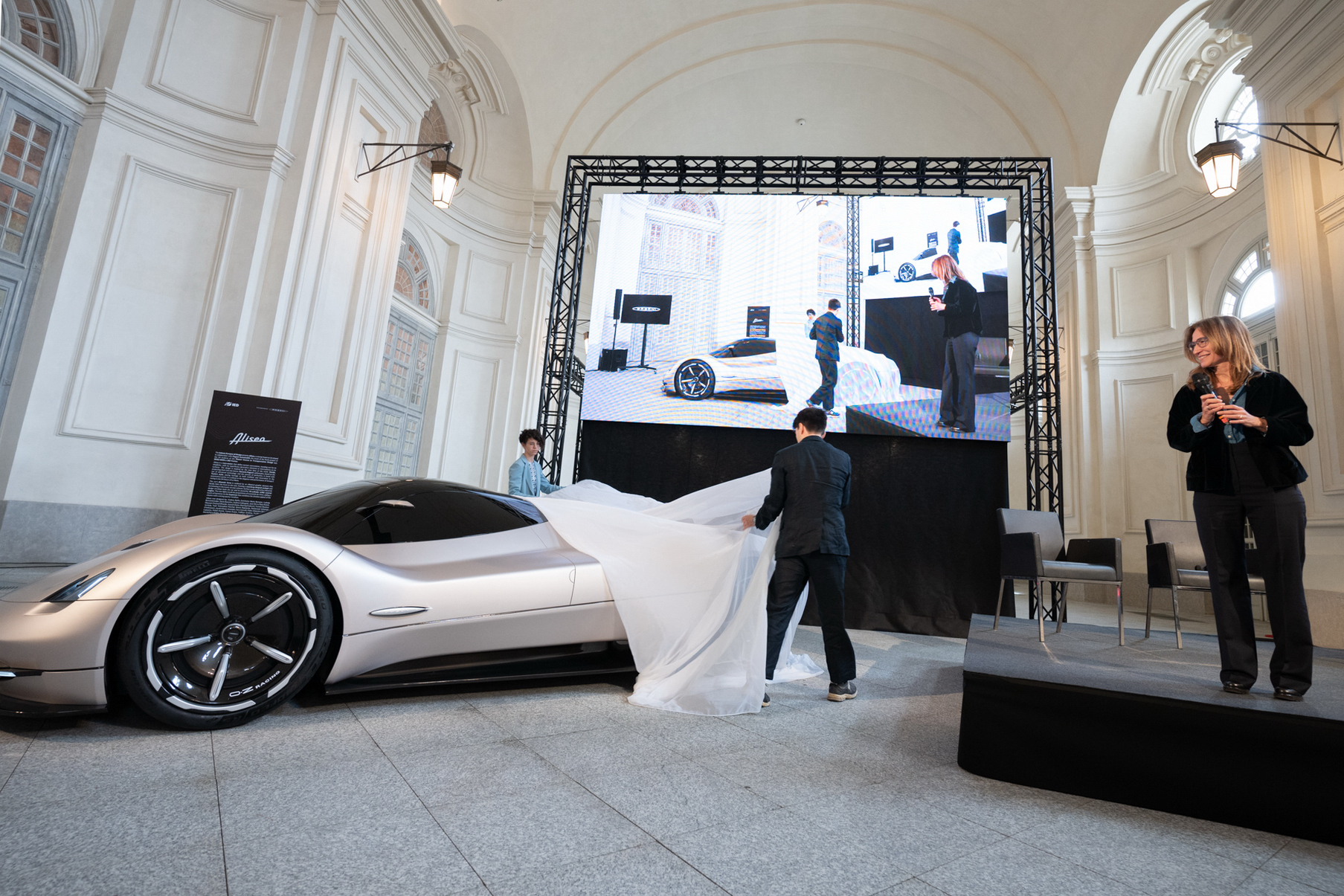- Alisea concept celebrates 25 years of Pagani.
- Joint project between IED Torino design students and Pagani itself.
- Full-scale model updates classic Zonda design for the 2020s.
Pagani, for so long the new kid on the supercar block, isn’t so new anymore. The Modena-based brand turns 25 this year and to celebrate that milestone Pagani has joined forces with a team of trainee designers to create a concept hypercar, the Alisea.
The full-scale prototype is the work of students on the Master Course in Transportation Design at IED Torino in Italy, who worked together with Pagani at every stage of the project from sketching the car to working up digital 3D models and finally creating the 1:1 concept.
Review: Pagani Huayra Codalunga Is A $7.6M Masterpiece Of Italian Power
Occupying the same kind of road space as the original Zonda, the 4,520mm-long (178 inches) Alisea rides on a 2,795mm (110 inches) wheelbase, but the roofline sits more than 75mm (3 inches) closer to the ground. The visual connection to the Zonda – and to a lesser extent, the Huayra that replaced it – is clear, but the IED team says it paid special attention to the surfacing to make the bodywork as clean as possible.
Unlike most combustion supercars, which are always trying to funnel huge volumes of air into their mid-mounted engines and cooling radiators, Alisea has no side scoops. That was a look Horacio Pagani achieved back in the original Zonda by placing the intakes both above and below the main quarter panels where they didn’t draw your attention.
IED assures us the lack of vents and intakes is not down to a switch to electric power: there’s still an AMG V12 behind the seats, the students say, or at least there would be if this was more than a design study.
The bubble canopy draws inspiration from 1980s Group C endurance racers, just like the Zonda did, but the curves are softer and more organic, and the IED crew has updated Pagani’s trademark quad headlight look and also slimmed down its famous A-pillar mirrors.
More: Pagani Huayra R Simulator Is As Extreme And Carbon Fiber Intensive As The Real Model
Giant fender peaks at each corner exaggerate the low height of the rear deck and the rear end is dominated by the space-rocket-style exhaust setup, which exits through the middle of the tail, another Pagani design staple.
Do you think this concept would make a good base for a future Pagani hypercar or is it too derivative and not extravagant enough?


































































